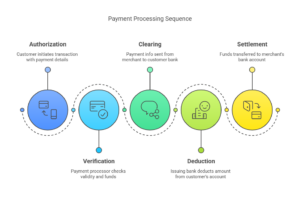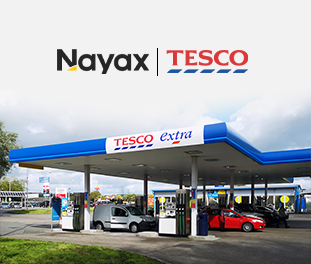Payment processing is the series of actions required to complete a financial transaction by facilitating the transfer of funds between a customer and a merchant. The key steps in this essential service – authorization, clearing, and settlement – ensure seamless, efficient, secure and convenient commerce.
Key Steps in Payment Processing
- Authorization: The first step in payment processing is authorization. The customer initiates a transaction by providing their payment details, such as a credit card number or bank account information. The payment processor then verifies the validity of the payment information and checks that there are sufficient funds or credit availability. This step is crucial for preventing fraudulent transactions and ensuring that the customer has the means to complete the purchase.
- Clearing: Once the transaction is authorized, the clearing process begins. During this phase, the payment information is sent from the merchant’s bank (acquiring bank) to the customer’s bank (issuing bank) through the payment network, which may include intermediaries such as card networks (e.g., Visa, Mastercard). The issuing bank then reviews the transaction details and deducts the appropriate amount from the customer’s account, preparing the funds for transfer to the acquiring bank.
- Settlement: The final step in payment processing is settlement, whereby the funds are transferred from the customer’s bank to the merchant’s bank. This process typically takes a few business days to complete, depending on the payment method and the banks involved. During settlement, the acquiring bank credits the merchant’s account with the transaction amount, minus any processing fees. The funds are then available to the merchant for use.

Benefits of Efficient Payment Processing
Efficient payment processing offers several benefits to both merchants and customers, including:
For merchants:
- Quick and secure transactions, reducing the risk of fraud and chargebacks.
- Enhanced cash flow by ensuring timely access to funds.
For customers:
- A seamless and convenient checkout experience, whether shopping online or in-store.
- Security measures that protect their sensitive payment information from unauthorized access.
Modern Payment Processing Technologies
Advancements in technology have significantly improved payment processing, making it faster, more secure, and more versatile. Innovations such as contactless payments, mobile wallets, and cryptocurrency transactions have expanded the range of payment options available to consumers. Additionally, payment processors now employ advanced encryption, tokenization, and machine learning algorithms to detect and prevent fraud, ensuring a secure transaction environment.


